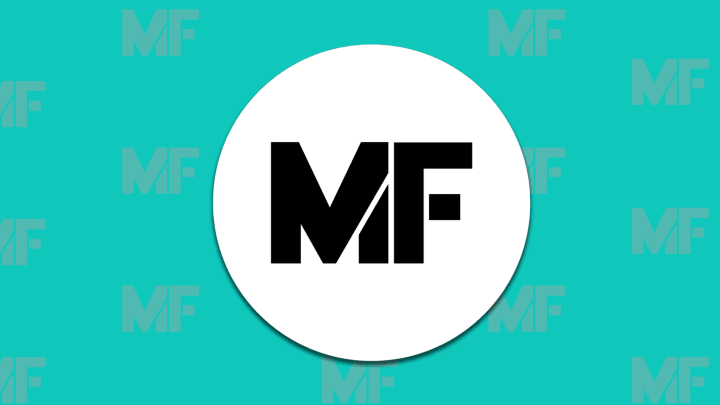1. The word “umlaut” comes from one of the Brothers Grimm.
Jacob Grimm was not only a collector of fairy tales (along with his brother Wilhelm), but also one of the most famous linguists ever. In 1819 he described a sound-change process that affected the historical development of German. He called it umlaut from um (around) + laut (sound).
2. “Umlaut” is originally the name for a specific kind of vowel mutation.
Technically, “umlaut” doesn’t refer to the dots, but to the process where, historically, a vowel got pulled into a different position because of influence from another, upcoming vowel.
3. Mimicking that mutation process is a great way to learn to pronounce the umlaut.
Try this: make a u sound (an “oo”). Now imagine there’s an i-sound (an “ee”) coming up. Keep your lips completely frozen in u position while you try to say “ee” with the rest of your mouth. You should feel the body of your tongue move forward and up in your mouth. Hold that u sound with your lips though! Good. That’s an ü.
Not working? Trying pinging back and forth: oo-ee-oo-ee-oo-ee-oo-ee … now freeze your tongue position in “ee” and only move your lips back to “oo.”
(Start with “ah” for ä and “oh” for ö.)
4. English was also affected by the umlaut mutation.
Ever wonder why the plural of “mouse” is “mice”? Blame umlaut. Way, way back in a time before English had branched off from other Germanic languages, plurals were formed with an –i ending. So mouse was mus, and mice was musi. That plural –i pulled the u forward into umlaut. Later, the –i plural ending disappeared and a whole bunch of other sound changes happened, but we are left with the echo of that mutated vowel in mouse/mice, as well as in foot/feet, tooth/teeth, and other irregular pairs.
5. Umlauts weren’t always written as dots above a vowel.
Since the Middle Ages, umlauted vowels have been indicated in various ways in German. Before the two-dot version became the standard in the 19th century, it was usually written as a tiny “e” above the vowel, like so:
It is still sometimes written with an e next to the vowel, for example, Muenchen for München, or schoen for schön.
6. Not all umlauts are umlauts.
We rather casually use “umlaut” to mean “two little dots above a letter,” but not all little dots are umlauts. The mark that prevents two adjacent vowels from combining into one syllable is called a “diaeresis” or “trema.” You see it in French (naïve, Chloë, Noël) and in the pages of the New Yorker (coöperate, reëlection). In Spanish it indicates that the u should be pronounced in the combination gu which is usually pronounced as g alone. Sigue is “seegay” but pingüe is “pingway.”
7. How do you alphabetize umlauted vowels? Depends on the language.
In German, the umlaut is ignored for alphabetization purposes, except when it comes to lists of names. Then, ü, ö, and ä are treated like ue, oe, and ae, respectively, so that variations on the same name (Müller, Mueller) will be grouped together. In Swedish and Finnish the umlauted vowels come at the end of the alphabet (…X,Y,Z,Å,Ä,Ö). In Hungarian and Turkish the umlauted vowels follow their non-umlauted counterparts.
8. In Germany, a Big Mac used to be a Big Mäc.
And the Filet-o-Fish was the Fishmäc. The spelling with the umlaut actually gets German speakers a little closer to the English pronunciation of “Mac.” But in 2007 McDonald’s took away the umlauts, and now Germans have to get boring ol’ Big Macs like the rest of us.
9. Epäjärjestelmällistyttämättömyydellänsäkäänköhän
This Finnish word, according to the Guinness Book of Records, is the longest non-compound word in the world. With 12 umlauted letters, it is probably the word with the most umlauts as well. It means something like “questionable this thing being doubtful its non-unsytematization.” Finns don’t even really understand it. But they can just as well get five umlauts in a normal word like kääntäjää (translators). The longest run of consecutive umlauts comes from Estonian: jäääär means “the edge of the ice.”
10. An artificial language full of umlauts became hugely popular in the 1880s.
A German priest named Johann Schleyer invented a universal language he called Volapük. It was based on simplified European roots and was meant to be logical and easy to learn. It was chock-full of umlauts: “love” was löf, “smile” was smül, and “speak” was pük. Many people did learn it, and by 1889 there were over 200 Volapük clubs around the world and 25 Volapük journals. Even people who didn’t learn it had heard of it. But supporters thought it would have a better chance of succeeding internationally if it lost the umlauts. Schleyer refused. He said that “a language without umlauts sounds monotonous, harsh, and boring.” Infighting over umlauts and other proposed reforms led to a schism and, ultimately, to the decline of Volapük.
11. Heavy Metal Umlauts don’t look so heavy metal to umlaut users.
Beginning with Blue Öyster Cult in the early '70s, heavy metal bands started using the umlaut to signal a badass hard rock attitude. To Americans the umlaut had a harsh, Teutonic look to it and Mötley Crüe, Motörhead, Queensrÿche, and dozens of other bands (listed on the Metal Umlaut Wikipedia page) tried to impart a little gothic scariness through randomly scattered pairs of dots. The dots didn’t have quite the same effect in umlaut-using countries, where the umlaut signifies vowel qualities of softness, highness, lightness and roundedness.
